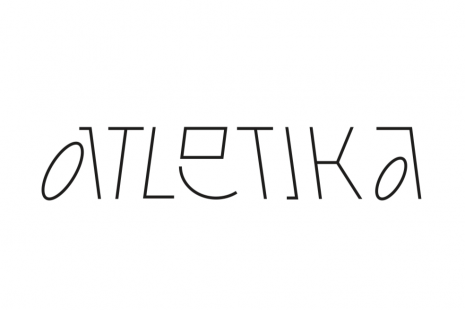Landing on polymorphous surfaces, the authors’ works mix together by squeezing their bodies into each other: they are each other’s safety mediums.
Algirdas Jakas’s anxiety-ridden objects are instruments of hypochondriacal self-diagnosis: embedded in their own exoskeletons, his drawings hint at an investigative yet dangerous radiation, piercing the bones like a self-made drill and analysing their psychogeological layers. Meanwhile, Eglė Ruibytė’s objects – so-called “void fillers”, commonly used to fill parcel boxes – speak of global processes and trajectories in which the notional vulnerable bodies or objects leave only their fallen “armour”, resting and replicating what they are supposed to protect. At first glance, these objects look like mass-produced artefacts, but on closer inspection they reveal manual work, lung air, errors, and even hidden messages.
This is the duo’s first collaborative project presenting their work in a gallery space. The architecture of Atletika, where the works are exhibited and interact, hints at the building’s original purpose. The surviving outline of a school’s physical education hall alludes to a socio-cultural discourse: disciplining, oppressive and competitive, yet at the same time a protecting enclosure, isolating from potential dangers.
For the last three years, the duo has been working between Hamburg and Vilnius. Both artists graduated in Graphic Art from the Vilnius Academy of Fine Arts and in Sculpture from the Hamburg University of Fine Arts (HFBK Hamburg).
Using materials which are sometimes associated with hobbies or therapy, Algirdas Jakas combines the aesthetics of drawing with organic and often physiological volumetric forms. The author explores the traits of care and collective anxiety and the principles of self-help. Eglė Ruibytė is a visual artist and graphic designer who combines these two disciplines in her multi-layered creative work. Delving into the technologies of industrial labour and searching for functional metaphors, she constructs mass-produced objects partly by means of manual work. In this way, she leaves deliberate space for errors that speak of humanness within the limits of an industrial machine.





